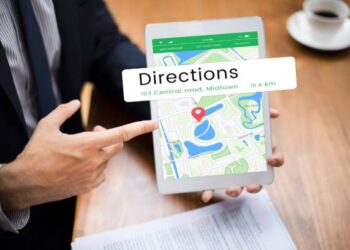Finding yourself in a serious car accident can be a life-changing event that leaves you with questions about what comes next. Understanding your legal rights and options is crucial in the aftermath. Whether you’re dealing with injuries, property damage, or insurance claims, consulting with injury lawyers in Newcastle or your local area can help you navigate the complex legal landscape that follows such incidents.
Key Takeaways
- Act immediately – secure the scene, seek medical attention, and report to police
- Document everything – medical records, expenses, and evidence are vital for your claim
- Understand your state’s compensation system and time limits for claims
- Get professional legal advice for serious injuries or disputed liability cases
- Maintain careful records and communication throughout the claims process
Immediate Actions at the Scene
Safety and Emergency Services
Your first priority after an accident is safety. Call 000 for ambulance and police assistance, especially if there are injuries. If it’s safe to do so, move to a protected area away from traffic, but never leave seriously injured people unattended unless absolutely necessary for your own safety.
Reporting and Police Attendance
Police must be called if the accident involves injuries, fatalities, hit-and-run incidents, or major property damage. The police report becomes an official record of the incident and can significantly impact your claim’s outcome by establishing key facts about the accident circumstances.
Collecting Evidence
While at the scene, gather as much evidence as possible:
- Photos of all vehicles involved, showing damage from multiple angles
- Images of road conditions, traffic signs, and any skid marks
- Pictures of visible injuries (with consent)
- Contact details from witnesses
- Dashcam footage if available
Seeking Medical Attention
Always get medical assessment after an accident, even if injuries seem minor. Some serious injuries, like internal bleeding or concussion, may not show immediate symptoms. Early medical records also establish a clear link between the accident and your injuries, which strengthens future claims.
“The documentation of your injuries and treatment from day one creates an undeniable medical timeline that forms the backbone of a successful compensation claim.” – Conrad Curry
Medical Records, Treatment and Rehabilitation
Immediate and Ongoing Medical Care
Keep detailed records of all medical care received, including emergency treatment, hospital stays, specialist consultations, and prescribed medications. These records form the foundation of your compensation claim by establishing the extent and impact of your injuries.
Rehabilitation and Allied Health
Many serious injuries require ongoing rehabilitation. Document all referrals to physiotherapy, occupational therapy, psychology, and case management services. These treatments demonstrate the long-term impact of your injuries and associated costs.
Record Keeping
Maintain a comprehensive file with all medical invoices, receipts, reports, and appointment notes. Consider keeping a journal documenting pain levels, limitations, and how the injuries affect your daily life. This evidence will help quantify your non-economic losses.
Understanding Liability and Fault in Australia
How Fault is Established
Liability in car accidents is determined through examination of police reports, witness statements, expert accident reconstruction reports, and vehicle damage assessment. Traffic laws and road rules also play a significant role in establishing who was at fault.
Partial Fault and Contributory Negligence
Australian law recognises that accidents can involve shared responsibility. If you’re found partially at fault, your compensation may be reduced by the percentage of your contribution to the accident. This is known as contributory negligence and varies by jurisdiction.
State and Territory Differences
Each Australian state and territory has unique motor accident compensation schemes. NSW operates under a fault-based CTP scheme, Victoria has the TAC no-fault scheme, Queensland has a hybrid system, while other states have their own variations. Understanding your state’s specific system is essential for maximising your claim.
Insurance Systems and Making a Claim
Compulsory Third Party (CTP) and State Schemes
CTP insurance is mandatory for all registered vehicles in Australia, but coverage varies significantly between states. Victoria’s Transport Accident Commission (TAC) offers no-fault benefits, NSW has private CTP insurers regulated by SIRA, and Queensland operates a statutory scheme with defined benefits.
Steps to Lodge a Claim
To make a successful claim, you’ll need to:
- Notify the relevant insurer within required timeframes
- Complete claim forms accurately
- Provide medical evidence and certificates
- Document financial losses with payslips and tax returns
- Submit all paperwork before statutory deadlines
What to Expect from Insurers
After lodging a claim, insurers typically assign a case manager who will assess your claim, request additional information, and potentially arrange independent medical examinations. This process can take months, particularly for serious injuries where the full extent of damages may not be immediately apparent.
Time Limits and Limitation Periods
Strict time limits apply to car accident claims across Australia. Most jurisdictions require notification within days or weeks of the accident, with formal claims to be lodged within months. The ultimate limitation period for court proceedings is typically three years, though exceptions exist for certain circumstances.
Types of Compensation Available
Economic Loss
Economic loss compensation covers quantifiable financial impacts including past and future medical expenses, lost income, superannuation losses, rehabilitation costs, home and vehicle modifications, and domestic assistance needs.
Non-Economic Loss
Non-economic or general damages compensate for pain, suffering, loss of enjoyment of life, and psychological impacts. Most jurisdictions require injuries to meet a threshold of seriousness before these damages can be claimed, often assessed through whole person impairment percentages.
Other Heads of Loss
Additional compensation may be available for attendant care services, travel expenses related to treatment, replacement services for household tasks, and in fatal accidents, funeral expenses and dependency claims for family members.
How Compensation is Calculated
Compensation calculations rely on medical reports, income documentation, expert evidence on future care needs, and actuarial calculations for future losses. Each head of damage is individually assessed before being combined into a total claim value.
Legal Options and When to Get Advice
When Legal Advice is Appropriate
Seeking legal advice is particularly important if you’ve suffered severe injuries, face disputed liability, have a complex claim involving multiple parties, or have had your claim rejected by an insurer.
What a Lawyer Can Do
Personal injury lawyers specialising in motor vehicle accidents can gather expert evidence, negotiate with insurers, properly value your claim, manage statutory deadlines, and if necessary, represent you in court proceedings.
Costs and Funding
Many Australian personal injury lawyers work on conditional (no win, no fee) arrangements. Understanding fee structures, potential disbursements for medical reports and expert witnesses, and any costs agreement terms is important before engaging legal representation.
Choosing a Lawyer
Look for lawyers with specific experience in motor vehicle accidents, knowledge of your state’s compensation system, and a track record of handling cases similar to yours in severity and complexity.
Practical Tips to Protect Your Claim
Maintain a Claim File
Keep a dedicated file with all accident-related documents, medical reports, expenses, and correspondence. Maintain a diary noting pain levels, limitations, and how injuries affect your daily activities and work capacity.
Communication with Insurers
Be cautious with insurer communications. Avoid giving recorded statements without legal advice, review written correspondence carefully before signing, and keep copies of all communication.
Social Media and Public Statements
Limit social media posts about your accident and recovery. Insurers increasingly monitor claimants’ social media accounts, and posts showing activities inconsistent with claimed injuries can damage your case.
Returning to Work and Capacity
Follow medical advice about return to work timelines and restrictions. Keep your employer informed about your capacity, and document any modifications needed or difficulties experienced when returning to duties.
Conclusion
Navigating the aftermath of a serious car accident requires careful attention to medical care, evidence collection, and understanding your legal rights. While the process can be complex, taking the right steps early can significantly impact your recovery – both physically and financially. Remember that state-specific rules apply across Australia, and seeking appropriate legal advice for serious injuries is often the best way to ensure fair compensation. If you’re facing the challenges of a serious accident claim, Conrad Curry can provide the expertise needed to protect your rights and secure the compensation you deserve.










